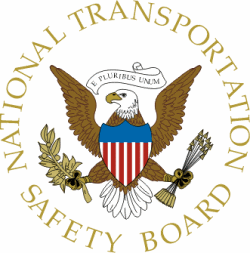Fri, Aug 09, 2013
Accident Occurred Near Georgetown, SC
The NTSB has released a preliminary report from an accident which occurred July 29 about 1320 EDT which resulted in the fatal injury of the pilot.

According to the report, the Folland GNAT T1, airplane, N18GT, collided with terrain during an uncontrolled descent near the Georgetown County Airport (GGE), Georgetown, South Carolina. The airplane, which was registered to Foogair Inc, was destroyed. It was being flown by John Prince Harris of Charleston, WV, an airline transport pilot, on a personal flight under the provisions of 14 Code of Federal Regulations Part 91. Visual meteorological conditions prevailed and an instrument flight rules flight plan was filed for the flight that departed Yeager Airport (CRW), Charleston, West Virginia, destined for GGE.
According to witnesses the pilot radioed personnel at the airport on approach and they went outside to see him land. The pilot crossed over the midfield and entered a right downwind for runway 23. The airplane made a high speed flyby over the runway between 100-200 feet AGL. At the end of the runway the airplane pitched up approximately 30 degrees and began an aileron roll to the left. The first 180 degrees of the aileron roll was uneventful according to the witnesses, but when the airplane reached about the 190 degree point it abruptly pitched down and to the right. The airplane collided with the ground and an explosion was heard followed by a plume of smoke. No distress calls were heard on the radio from the pilot prior to the accident.
The wreckage was located in a heavily wooded area one mile southwest of GGE. The airplane was examined on scene and all major components of the airplane were accounted for at the accident site. A debris path revealed freshly broken tree branches at an approximate 45-degree angle. The debris path was on a 309-degree magnetic heading, and extended approximately 300 feet. Various fragments of the airplane were located along the debris path. The engine, fuselage and the sections of the wings and cockpit were located at the end of the debris path and had been consumed by a postcrash fire. Flight control continuity to the flight controls was not confirmed due to the fragmentation of the flight control and the hydraulic systems.
More News
Outboard Section Of The Right Wing And The Right Flap Separated In Flight And The Airplane Impacted A Farm Field Analysis: The pilot was approaching his destination airport under i>[...]
Final Approach Fix The fix from which the final approach (IFR) to an airport is executed and which identifies the beginning of the final approach segment. It is designated on Gover>[...]
"Our choice of when to respond, how to respond and on which targets to respond is a consideration that we make every time... Netanyahu also noted that anyone attacking Israel &ldqu>[...]
Estimated (EST) When used in NOTAMs “EST” is a contraction that is used by the issuing authority only when the condition is expected to return to service prior to the e>[...]
Aero Linx: Coalition of Airline Pilots Associations (CAPA) The Coalition of Airline Pilots Associations (CAPA) is the world’s largest pilot trade association representing ove>[...]
 NTSB Final Report: Cessna 177B
NTSB Final Report: Cessna 177B ANN's Daily Aero-Term (05.08.25): Final Approach Fix
ANN's Daily Aero-Term (05.08.25): Final Approach Fix Aero-News: Quote of the Day (05.08.25)
Aero-News: Quote of the Day (05.08.25) ANN's Daily Aero-Term (05.09.25): Estimated (EST)
ANN's Daily Aero-Term (05.09.25): Estimated (EST) ANN's Daily Aero-Linx (05.09.25)
ANN's Daily Aero-Linx (05.09.25)



